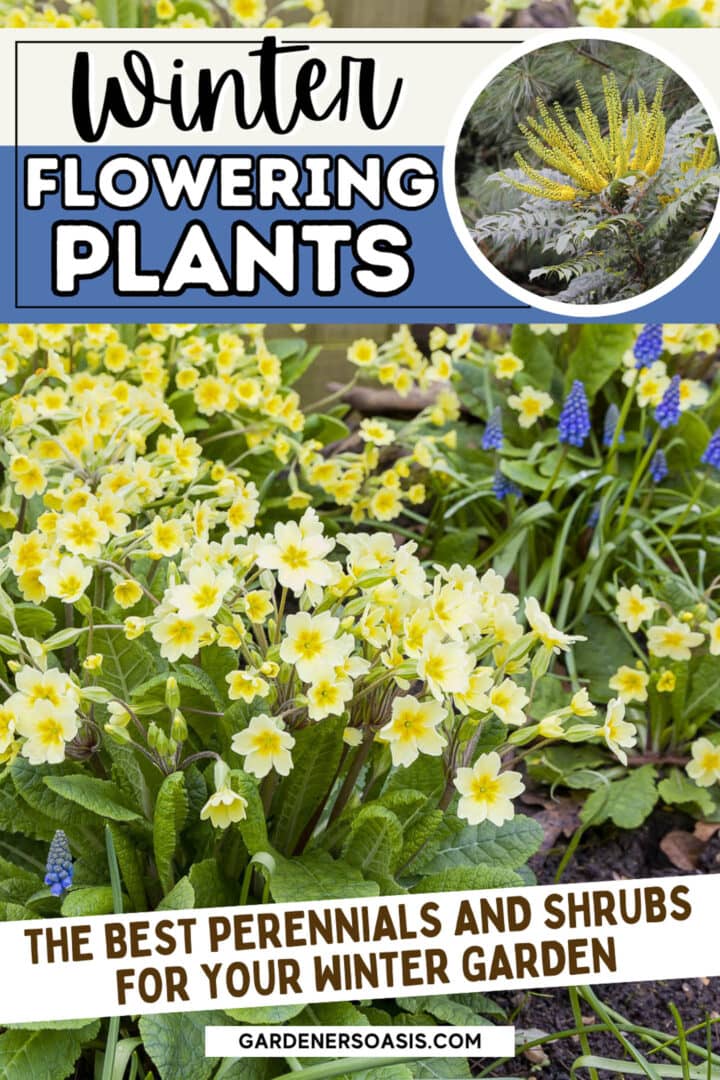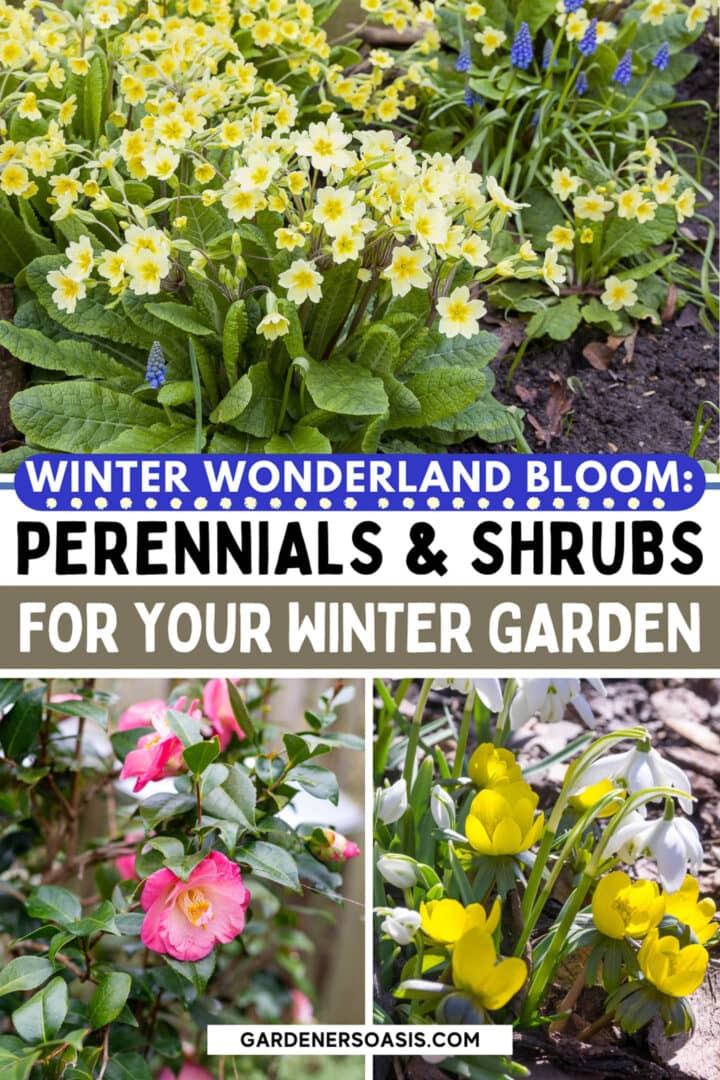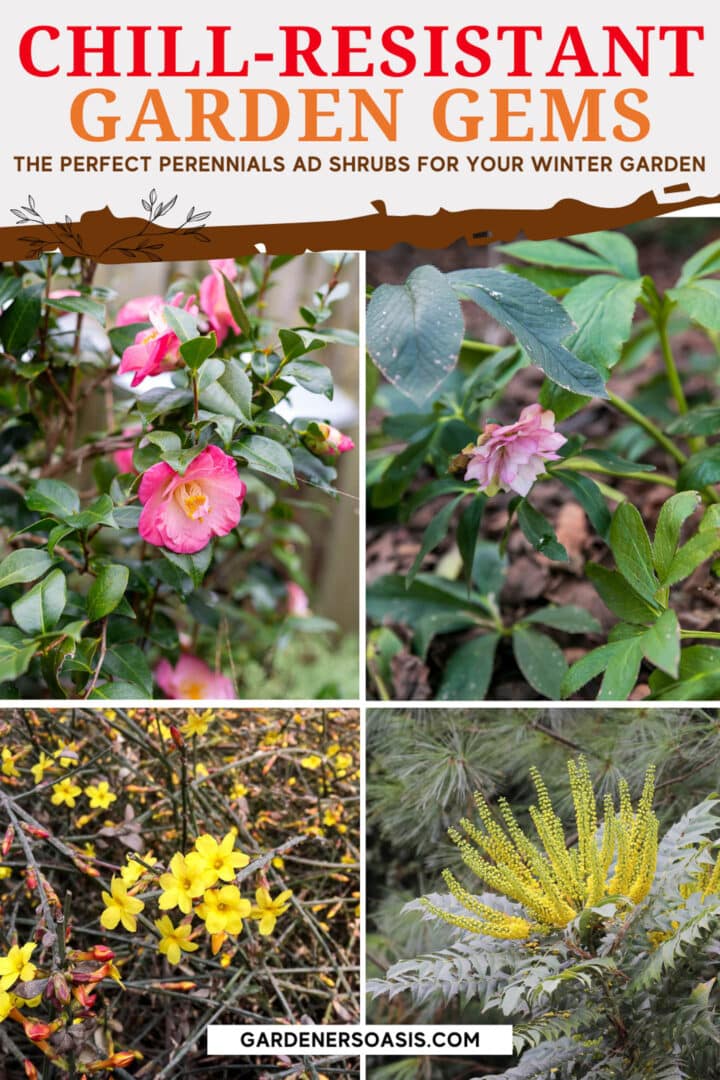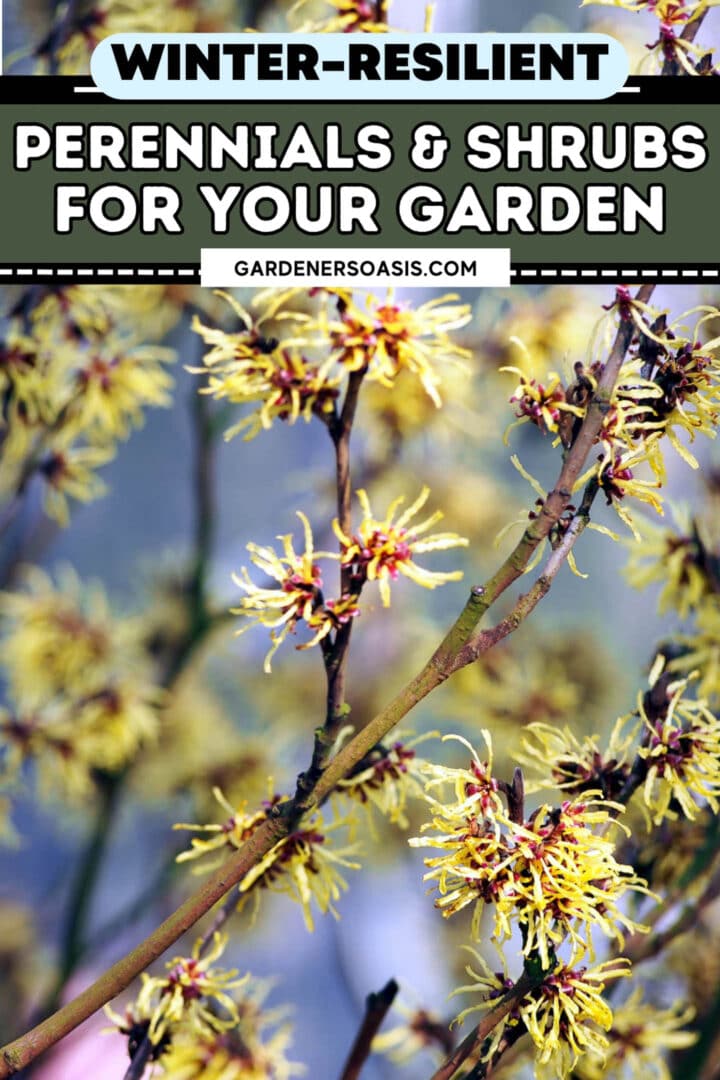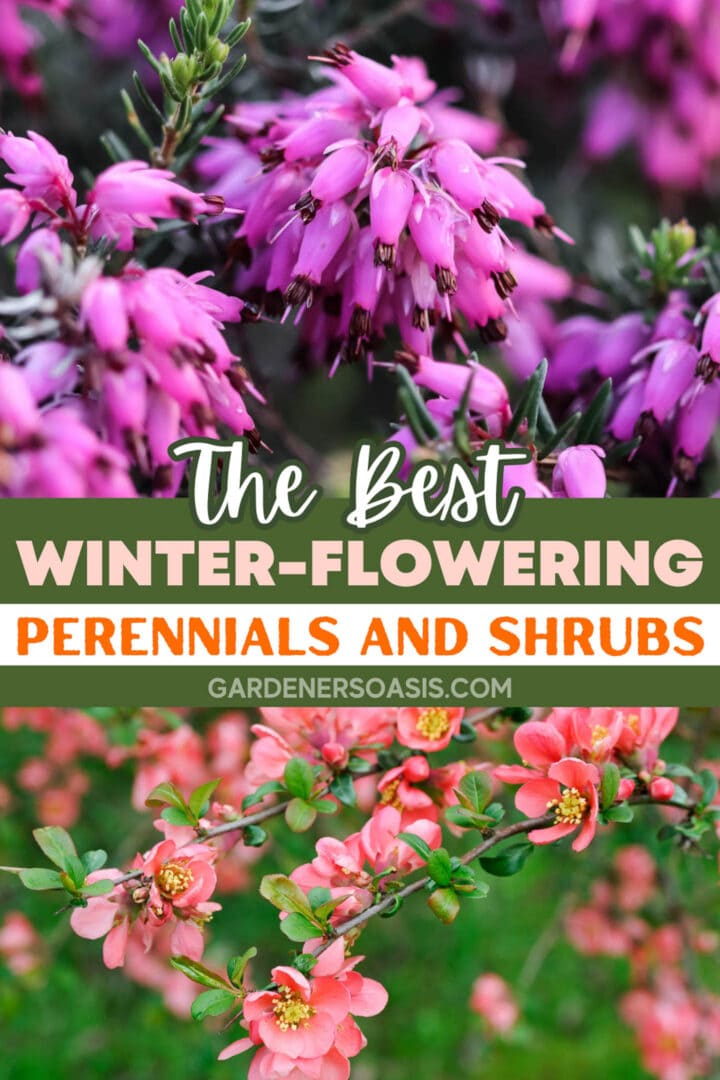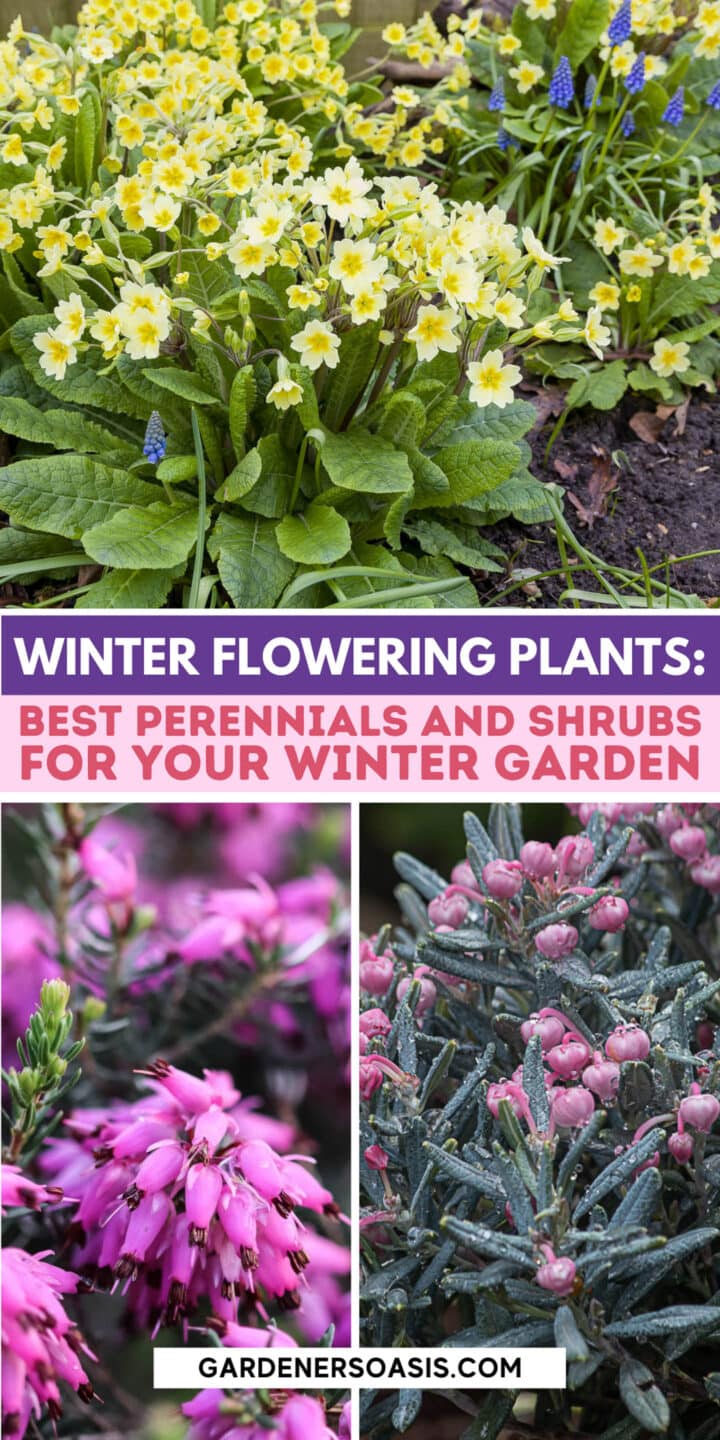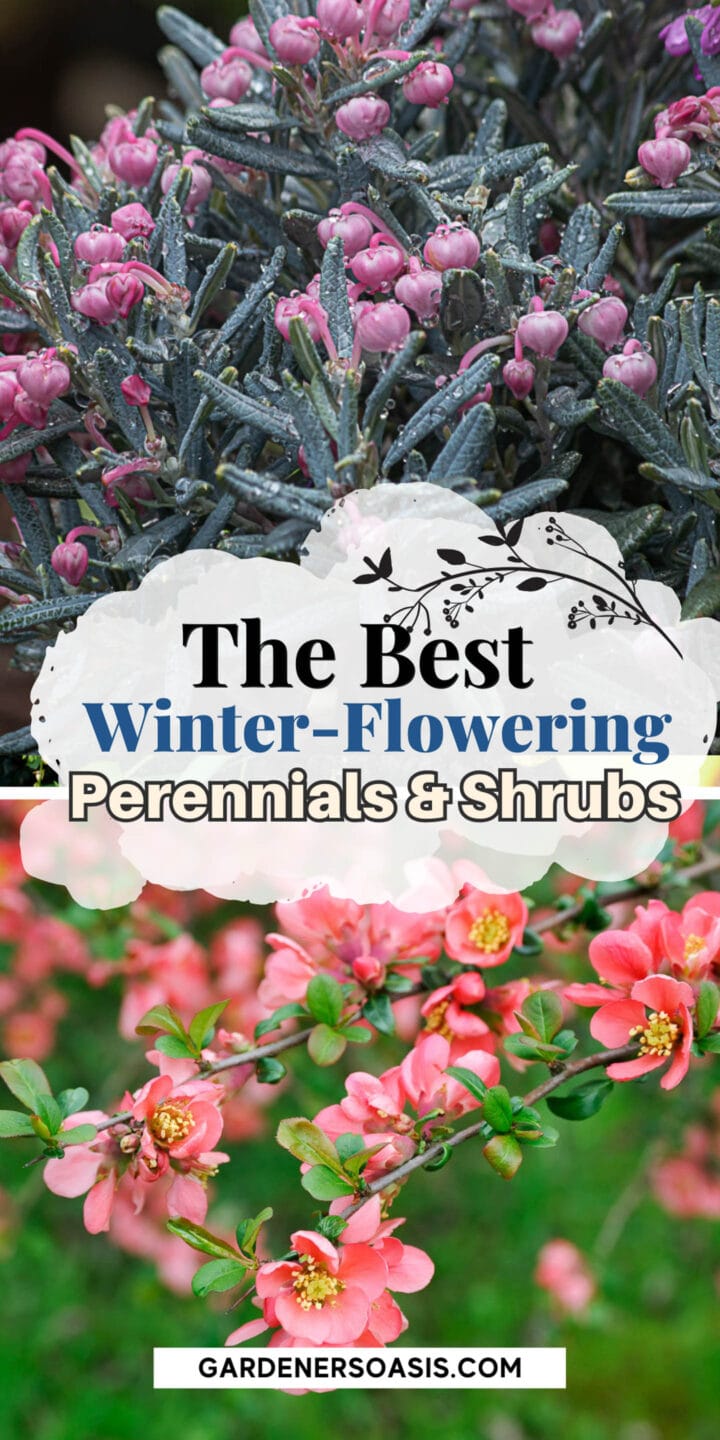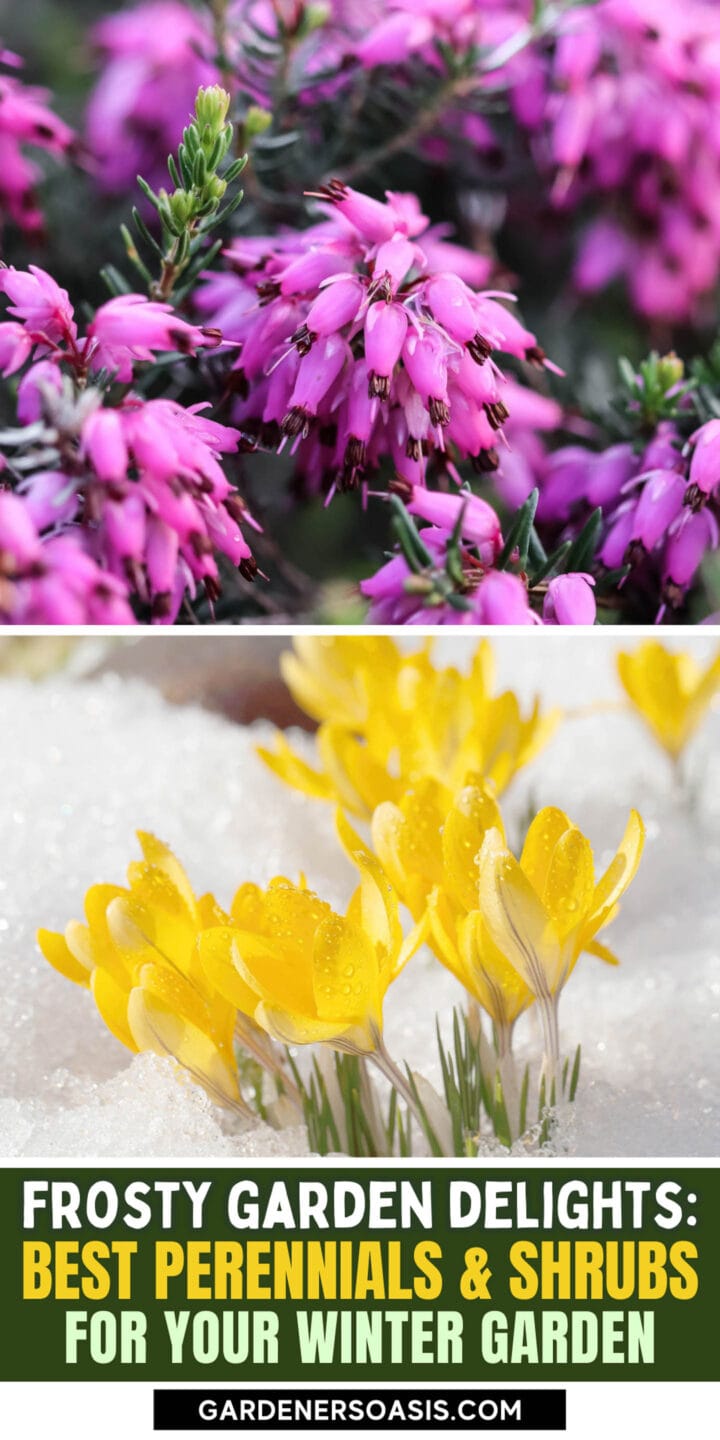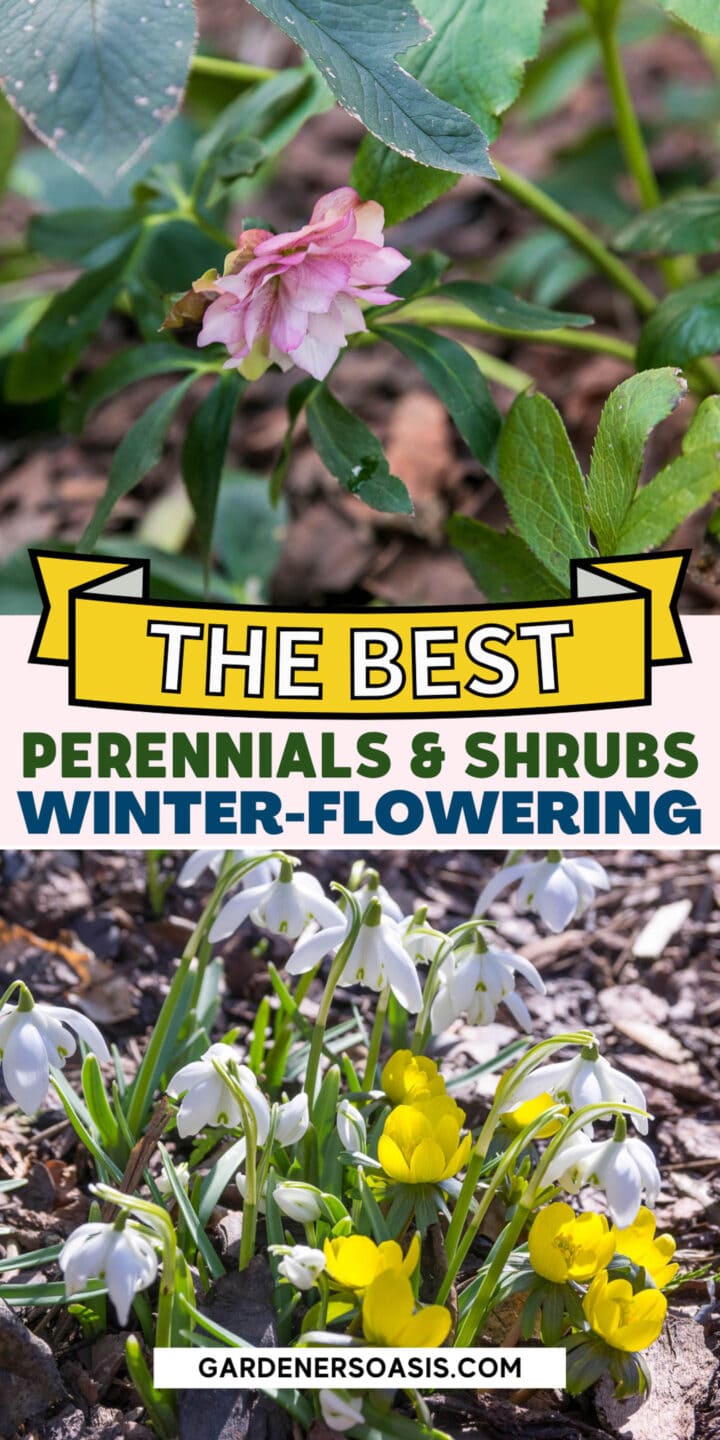Winter Flowering Plants: The Best Perennials And Shrubs For Your Winter Garden
When the weather is cold and dreary and your garden is looking a little dull, try adding some of these winter flowering plants to add a little color and texture when it is needed the most.
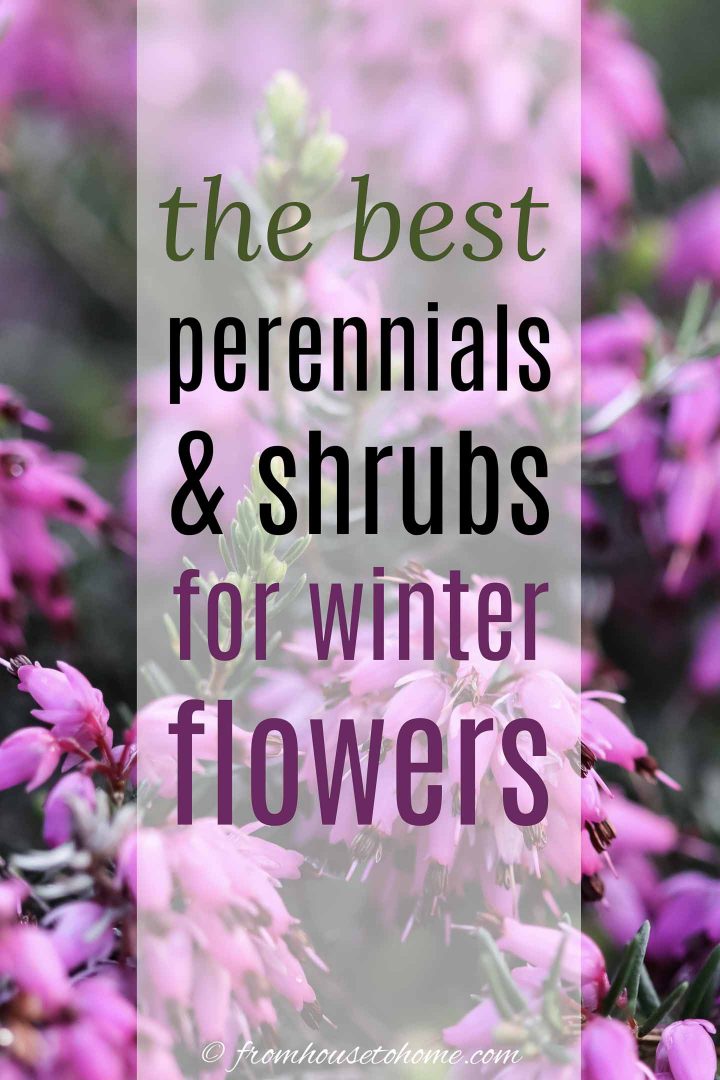
Winter.
Cold weather.
Plain-looking garden.
Those are the words that come to my mind when the temperatures start to dip.
So this year I set out to do something about it.
And went looking for some perennials and shrubs that bloom when everything else in the garden is taking a break.
Shrubs
The first winter flowering plants that I started with were shrubs.
Because they’re generally bigger and have branches, they add structure to your garden that can still be seen even when there’s snow on the ground.
So the winter blooms on these plants won’t be buried (unless you get A LOT of the white stuff).
And they’ll keep right on blooming even when they’re covered with ice.
Unfortunately, if you live in a colder zone, there just aren’t any larger shrubs (that I could find) which will bloom in these conditions. So you might want to skip down to the perennials section or stay tuned next week to check out our list of evergreen plants with winter interest.
1 | American Witch Hazel (Hamamelis Virginiana)
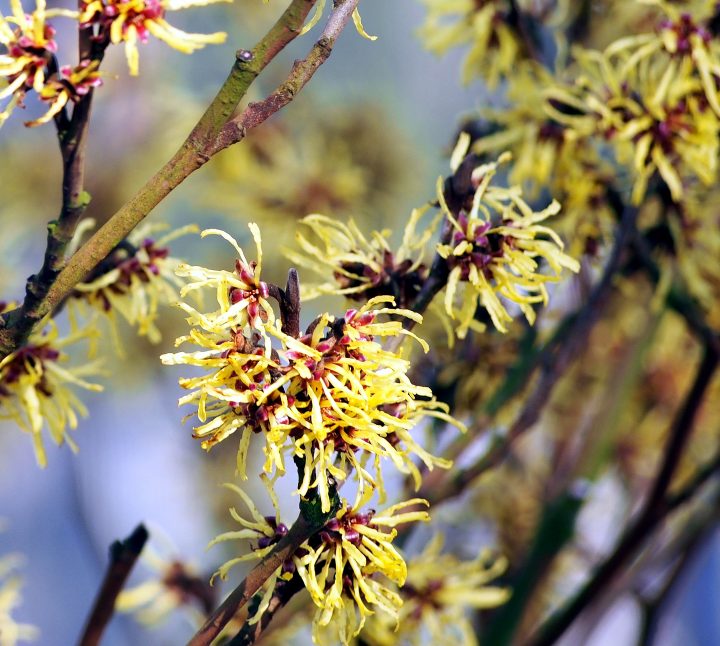
Zones: 4 to 8
Light: Part Shade
Bloom Time: Late Fall to Early Winter
Height: 10′ to 20′ tall
Spread: 15′ to 20′ wide
American Witch Hazel (Hamamelis virginiana) is a large deciduous shrub with clusters of yellow, citrus-scented petals that appear in the late fall and early winter.
As the name suggests, it is a native to North America that is low maintenance, fairly deer resistant and disease resistant once it is established.
Although Witch Hazel grows quite large naturally, it can be pruned to keep it smaller. This should be done before summer starts to prevent cutting off the buds.
Once the buds have formed, the branches can be cut and forced to bloom indoors where they make dramatic additions to a bouquet.
2 | Camellia
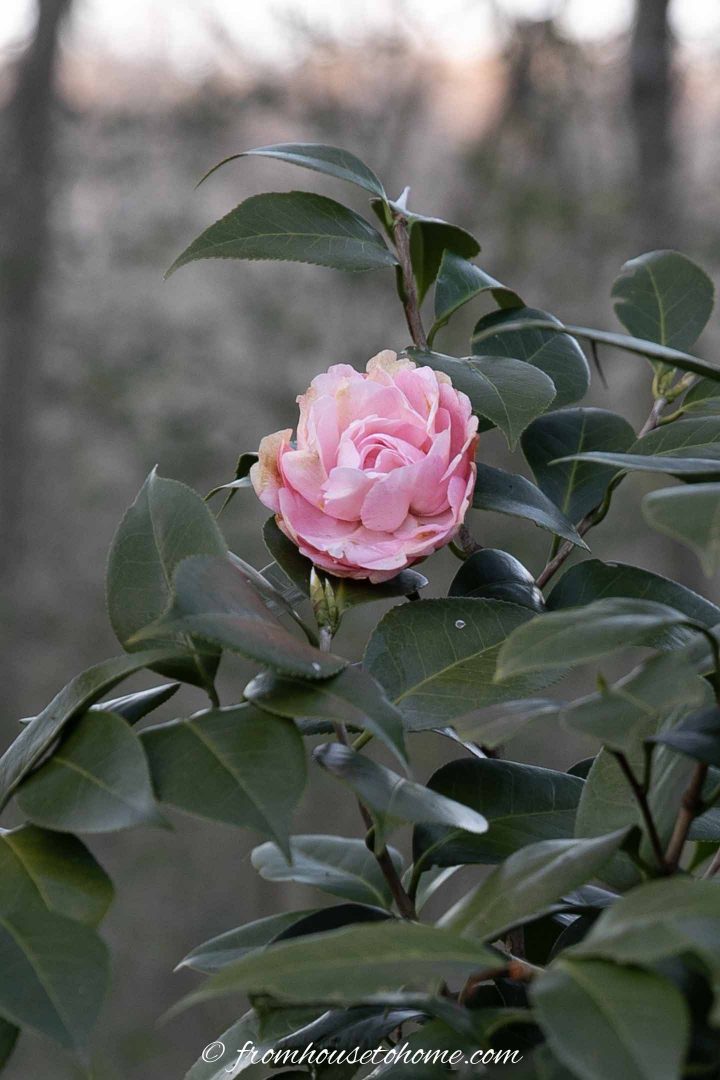
Zones: 6 – 10
Light: Part Shade to Shade
Bloom Time: Fall, Winter, or Spring (depending on the variety)
Height: 18″ to 25′ tall
Spread: 18″ to 8′ wide
Camellias are an easy-to-grow bush (or small tree if you cut off the lower branches as they grow) with dark green, evergreen leaves.
Besides their gorgeous flowers, the big claim to fame for Camellias is that they flower when most other plants are dormant: Anytime between the end of October and the beginning of May, depending on the variety.
Be sure to check the bloom time when you are buying the plant as it varies considerably between cultivars.
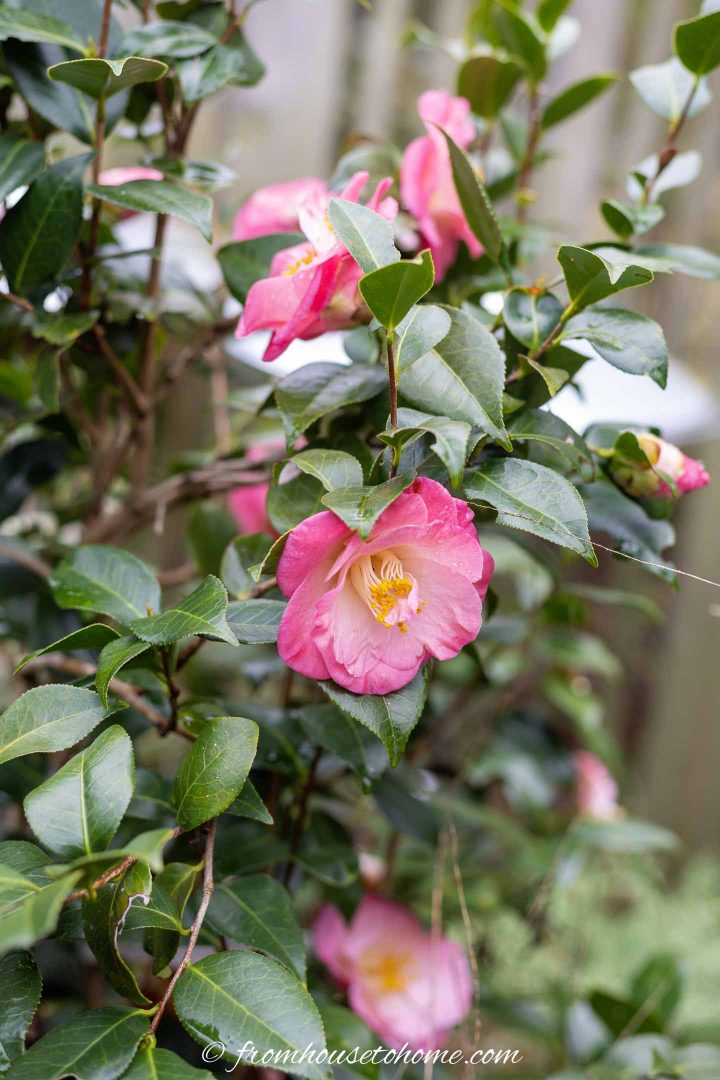
It does take them a couple of years to get going after they have been planted, but once established, they are covered in blooms.
Find out more about growing Camellias HERE.
3 | Daphne
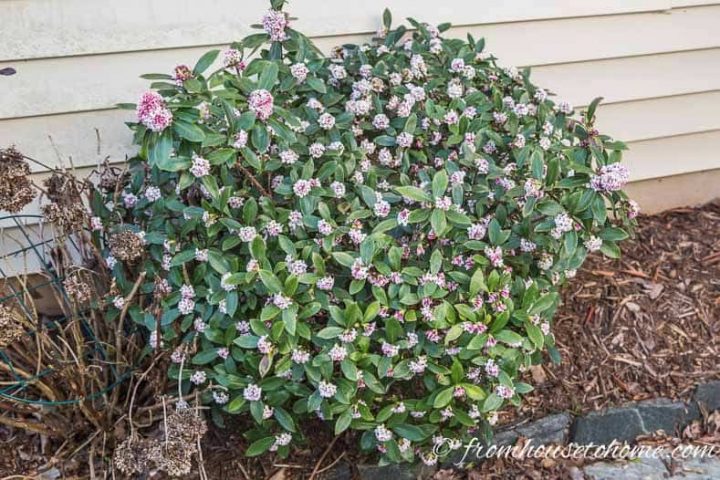
Zones: 5 to 10
Light: Shade to Part Shade
Bloom Time: Late Winter to Early Spring
Height: 3′ to 5′
Spread: 3′ to 5′
Daphne is a compact, shade-loving, deer-resistant shrub with very fragrant pink or white blooms.
Most varieties have evergreen leaves and produce flowers in shades of pink or white in late winter or early spring.
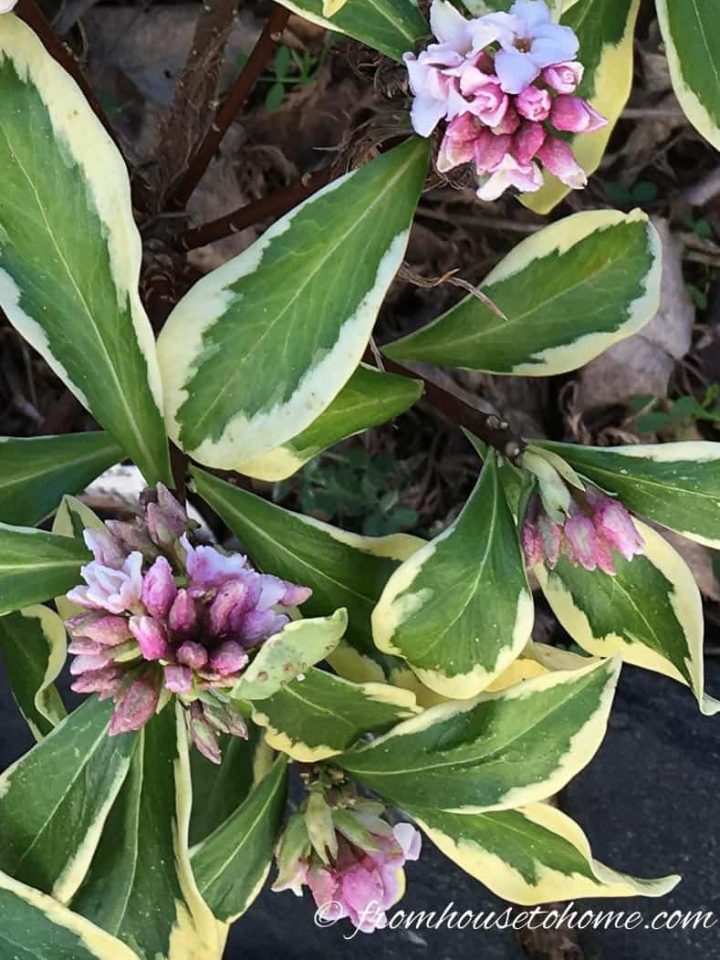
Some even have variegated leaves, which provides a little more interest when they aren’t blooming.
It can be a little tricky to get started. But keeping the plant well-watered, applying a generous layer of mulch in the spring, and pruning out the old wood once a year will help keep it alive and well.
And once it is established, Daphne is a very low maintenance bush.
Click HERE to find out more about Daphne.
4 | Japanese Quince (Chaenomeles japonica)
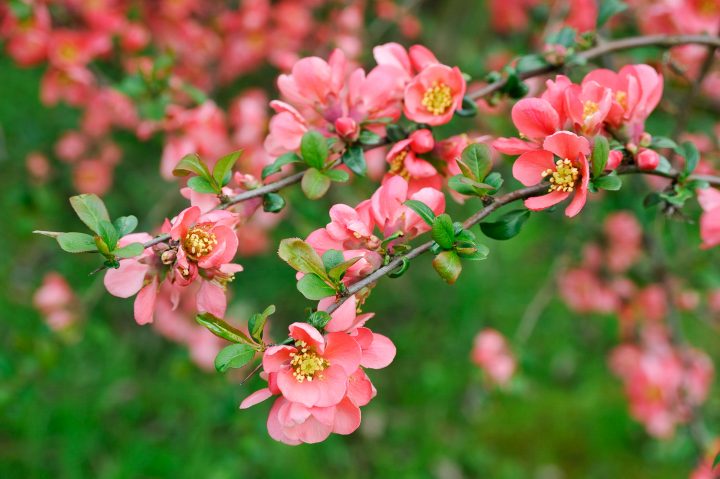
Zones: 5 to 9
Light: Full Sun to Part Sun
Bloom Time: Winter to Early Spring
Height: 2′ to 3′
Spread: 3′ to 6′
Japanese Quince is a low-growing deciduous shrub with bright orange to red flowers produced in late winter.
It’s an easy-to-grow bush that isn’t fussy about soil conditions and is quite drought-tolerant once established.
It is also resistant to both rabbits and deer, partly because of its thorny branches.
Prune as necessary immediately after blooming to prevent cutting off next year’s flowers.
5 | Magnolia
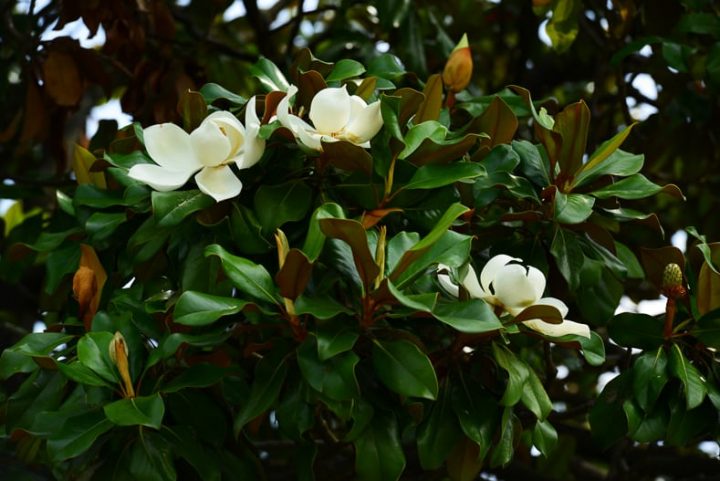
Zones: 4 to 12
Light: Full to Part Sun
Bloom Time: Late Winter, Spring or Summer (depending on the variety)
Height: 10′ to 30′ tall
Spread: 10′ to 30′ wide
In the South, people tend to think of Magnolias as the very large shrubs (or trees) with leathery, evergreen leaves and huge white flowers that bloom in the summer.
However, there are many different types of Magnolias that will thrive from the colder areas of zone 4 all the way through the tropical heat of zone 12.
Some bloom in late winter, some in the spring, and some in the summer.
Many are fragrant and all have beautiful flowers.
Click HERE to find out more about Magnolias.
6 | Mahonia
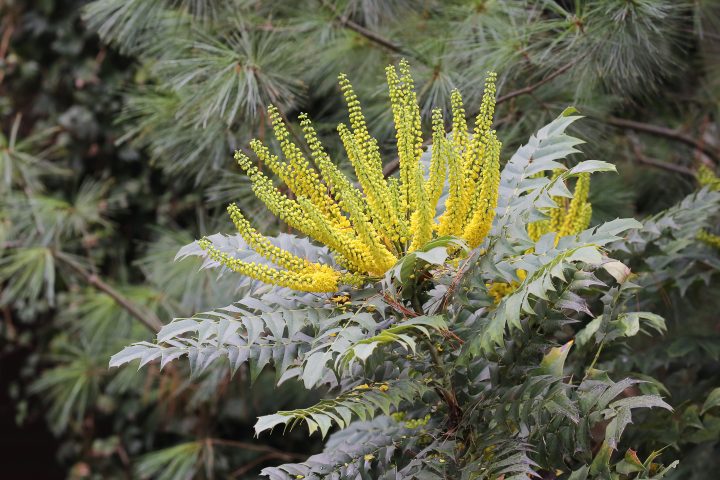
Zones: 5 to 9
Light: Part Shade to Shade
Bloom Time: Late Fall to Early Spring (depending on the variety)
Height: 3′ to 15′ tall (depending on the variety)
Spread: 3′ to 15′ wide
Mahonia is an unusual, tropical-looking shrub that produces sprays of fragrant, yellow flowers in late fall to early spring (depending on the variety).
Many varieties develop clusters of blue or black berries by summer that add to the plant’s interest.
It has spiky, evergreen leaves that often change color throughout the seasons and are deer resistant
Make sure to check the zones, size and bloom time of the plant you are buying as they vary considerably based on the species and variety.
Get more information about the Mahonia varieties here.
7 | Winter Jasmine (Jasminum nudiflorum)
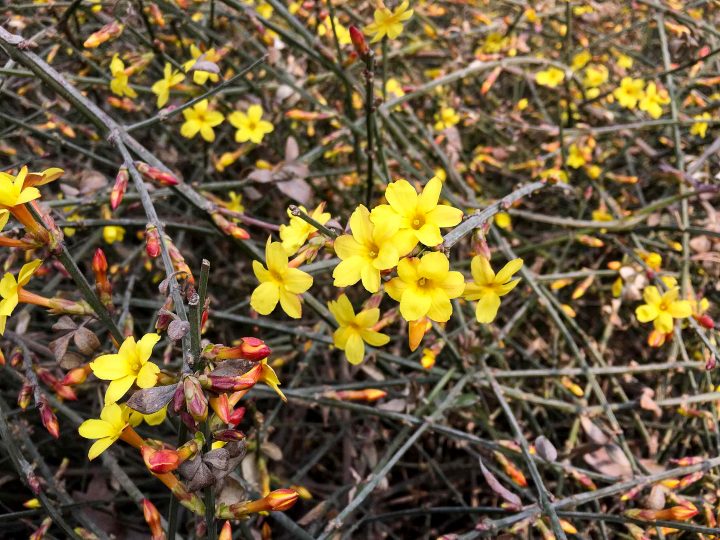
Zones: 6 to 10
Light: Sun to Shade
Bloom Time: Late Winter to Early Spring
Height: 4′ as a bush, 10′ to 15′ as a vine
Spread: 3′ to 6′
Winter Jasmine (Jasminum nudiflorum) is a vine-like shrub that can also be trained to grow on a trellis or the side of a wall.
It produces bright yellow flowers in the late winter to early spring. But unlike some of the other jasmines, they do not have a scent.
Although winter jasmine can grow in the shade, you will get the best blooms if it gets at least part sun.
The branches root where the touch the ground, so it will spread if left to its own devices. To keep it in check, prune as needed in early spring after it has finished flowering.
This plant is a winner of the Award of Garden Merit from the Royal Horticultural Society.
Perennials
Winter flowering perennials are a little easier to find than shrubs, especially in the colder zones.
The main problem with them is that a lot of them are low-growing ground cover plants.
Which means you may not be able to see the blooms if you have a heavy snowfall.
But when the snow starts to melt, many of these plants will be ready to greet you with beautiful, colorful flowers.
1 | English Primrose (Primula vulgaris)
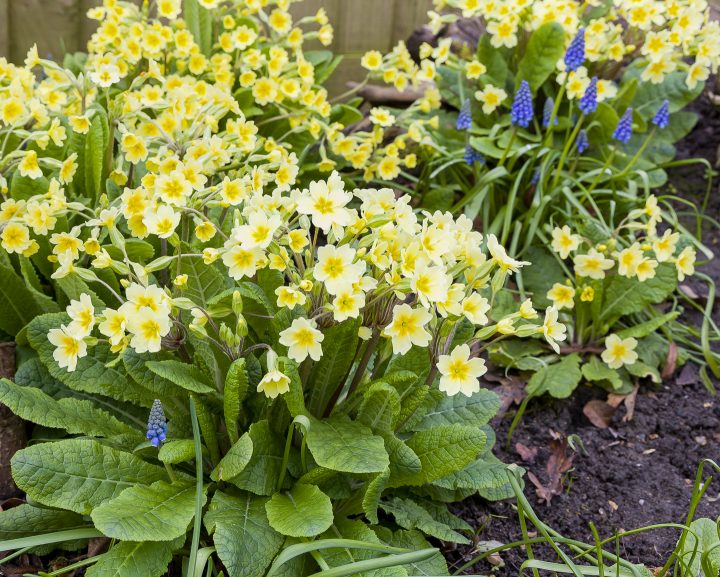
Zones: 4 to 8
Light: Part Shade
Bloom Time: Late Winter to Early Spring
Height: 4″ to 6″
Spread: 4″ to 9″
English primrose (Primula vulgaris) is a compact, semi-evergreen plant with small pale yellow, scented flowers that appear from late winter to early spring.
This European native plant loves part shade but will tolerate full sun in cooler regions.
It self-seeds so plant it where it can naturalize and you’ll be rewarded with a sunny show of flowers before most other plants have started to grow.
It goes dormant in the summer so be sure to locate it where other plants will cover the empty spots.
English primrose is such a joy to have in the garden that it received the prestigious Award of Garden Merit from the Royal Horticultural Society.
2 | Glory of the snow (Chinodoxa)
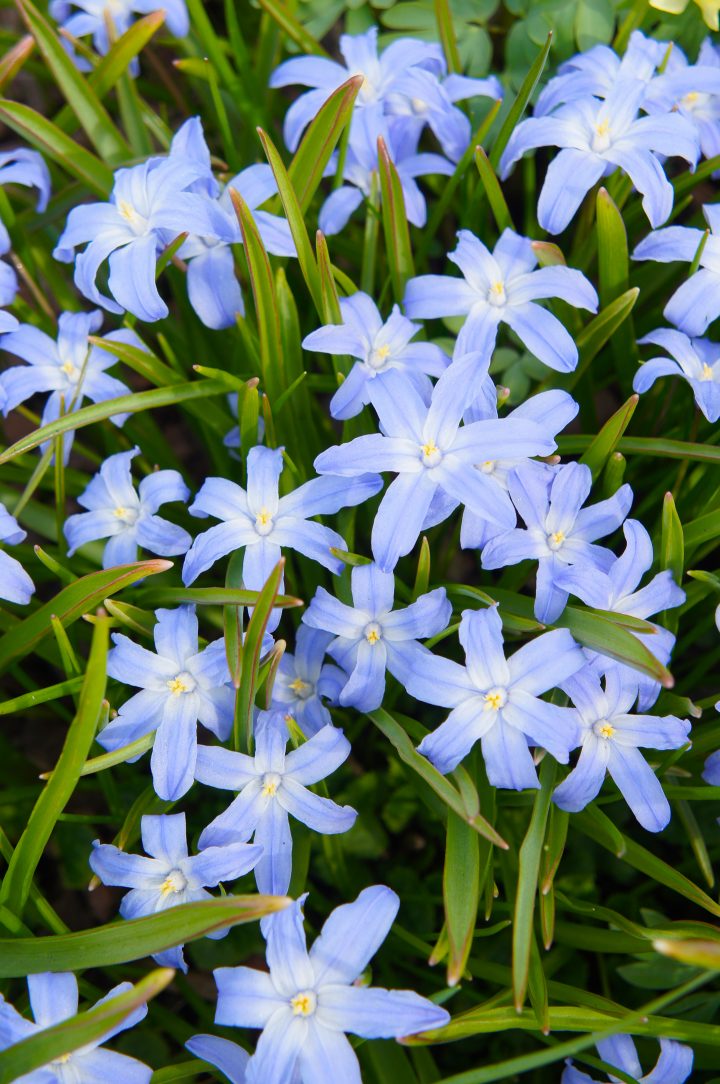
Zones: 2 to 8
Light: Full Sun / Part Shade / Shade
Bloom Time: Early Spring
Height: 6″ to 8″
Spread: 2″ to 3″
As the name suggests, Glory of the Snow is another one of the spring-flowering bulbs that blooms in late winter or very early in the spring and often comes up through the snow.
It sports pink, blue or white blooms that are deer-resistant and can naturalize into a carpet of flowers.
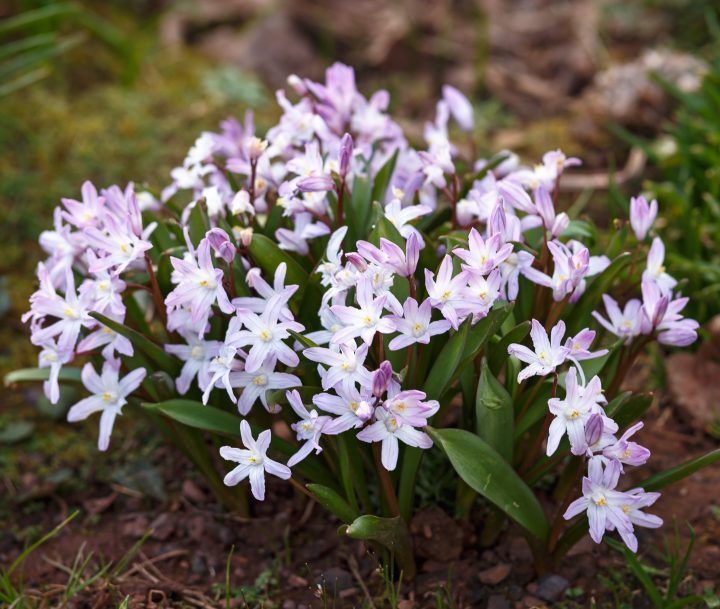
Plant Chionodoxa bulbs 3″ deep and 2″ to 3″ apart.
These plants are poisonous so be careful where you plant them if you have pets or kids that may try to eat them.
3 | Lenten rose (Hellebore)
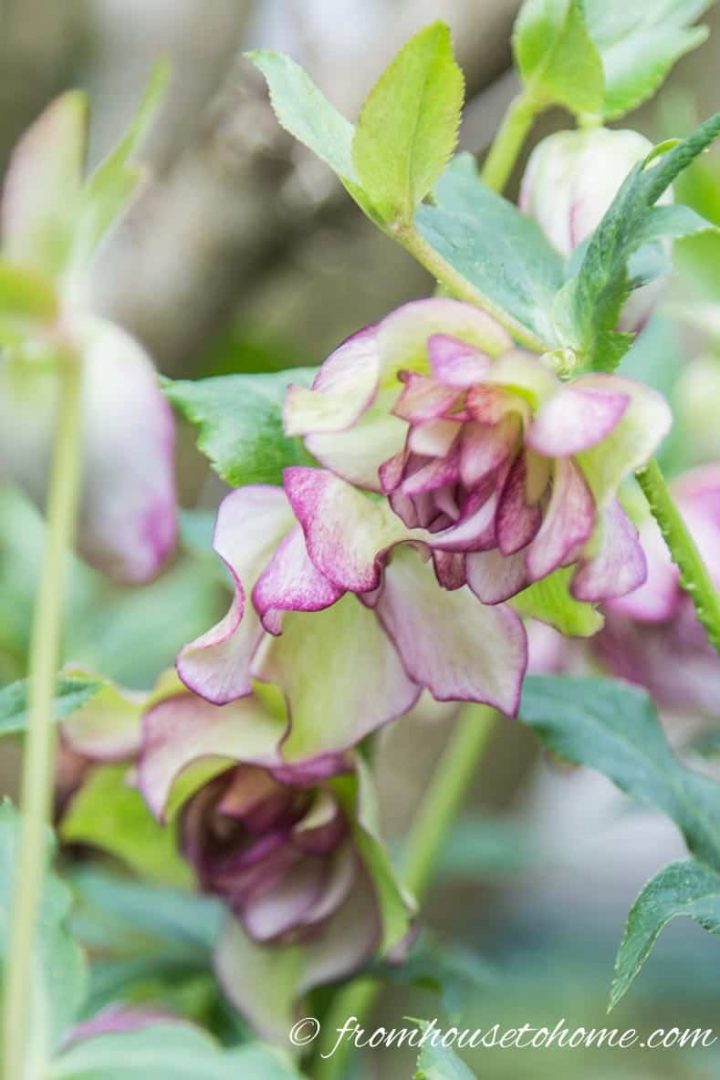
Zones: 4 to 9
Light: Shade
Bloom Time: Late Winter to Early Summer
Height: 12″ to 18″
Spread: 18″ to 24″
Hellebores are low-growing, clump-forming, evergreen perennials that start blooming in the winter, earning it the nickname ‘Christmas rose’. Even in Canada, their flowers can be seen peeping out from the snow in February.
Once they start blooming, they have the added benefit that the blooms last for quite some time. In my South Carolina garden, the first flowers appear in January and are still going strong in April.
The only maintenance I do, is to tidy the appearance by removing any dead leaves.
The plants can be a little gangly in the summer. Planting them with something that comes out a little later and also likes the shade (like Hostas) will help provide some distraction.
Find more information about growing Hellebores HERE.
4 | Snowdrops (Galanthus)
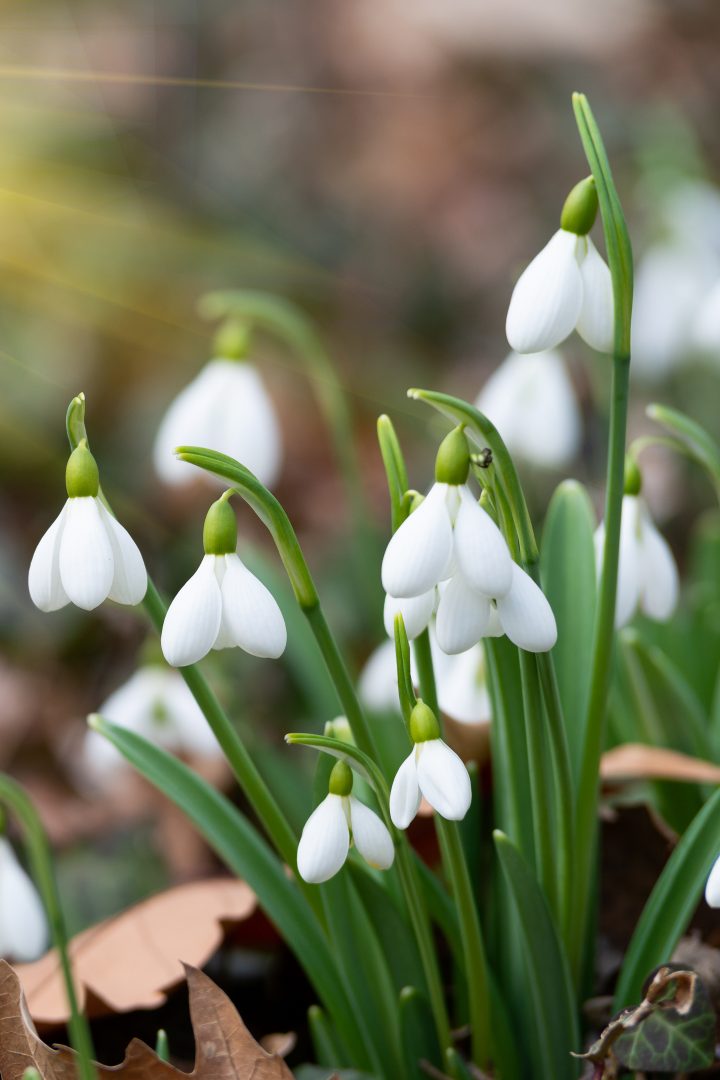
Zones: 3 to 9
Light: Shade / Part Shade
Bloom Time: Early Spring
Height: 6″ to 8″ tall
Spread: 2″
Snowdrops are an heirloom bulb that grows wild in Europe.
As their name suggests, they have white flowers that bloom in late winter or very early in the spring, often while snow is still on the ground.
They are deer-resistant, rabbit-resistant and the squirrels don’t like them.
Snowdrops will naturalize and create a pretty ground cover in the spring. But they go dormant in the summer so plant them with other shade ground covers (like Hostas and Ferns) to cover the empty space.
Plant the bulbs 5″ deep and 2″ to 3″ apart.
5 | Winter Aconite (Eranthis hyemalis)
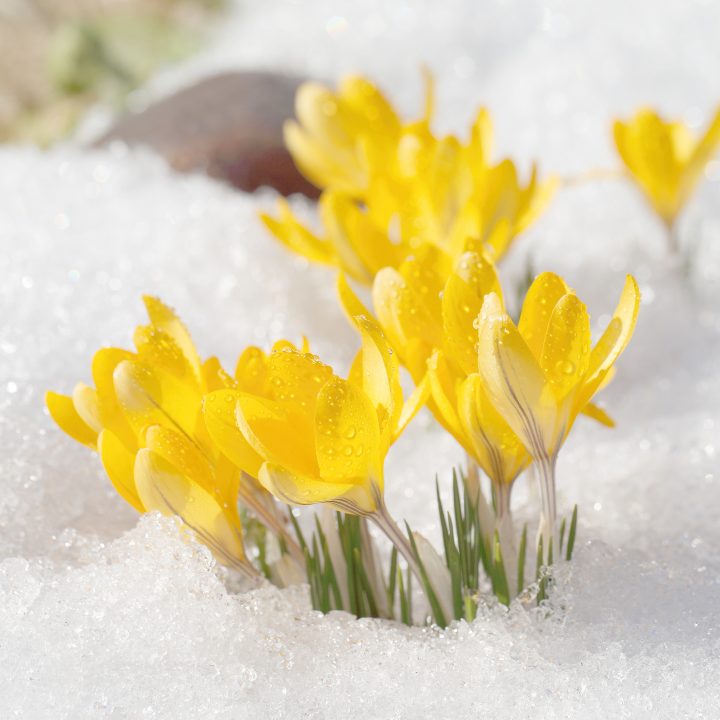
Zones: 4 to 7
Light: Sun to Part Shade
Bloom Time: Late Winter to Early Spring
Height: 3″ to 4″
Spread: 4″ to 6″
Winter Aconite (Eranthis hyemalis) produces fragrant, buttercup yellow flowers that can be seen pushing up through the snow in late winter.
Although they act and look like spring bulbs, they are actually tubers that should be planted in the fall.
Like bulbs, their foliage dies back after they bloom (it will be gone by late spring) and they will naturalize.
Winter Aconite is also one of the few plants that can be grown among black walnut trees, and deer don’t particularly care for them.
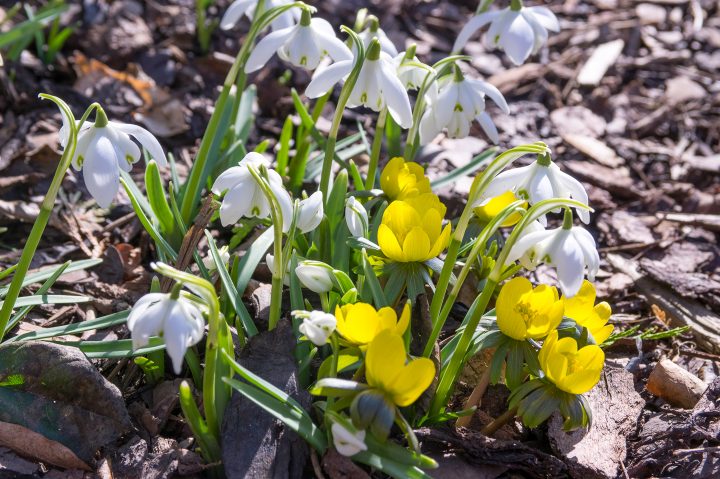
Growing them with other late winter flowers like Galanthus will make their color pop even more.
6 | Winter Heath (Erica carnea)
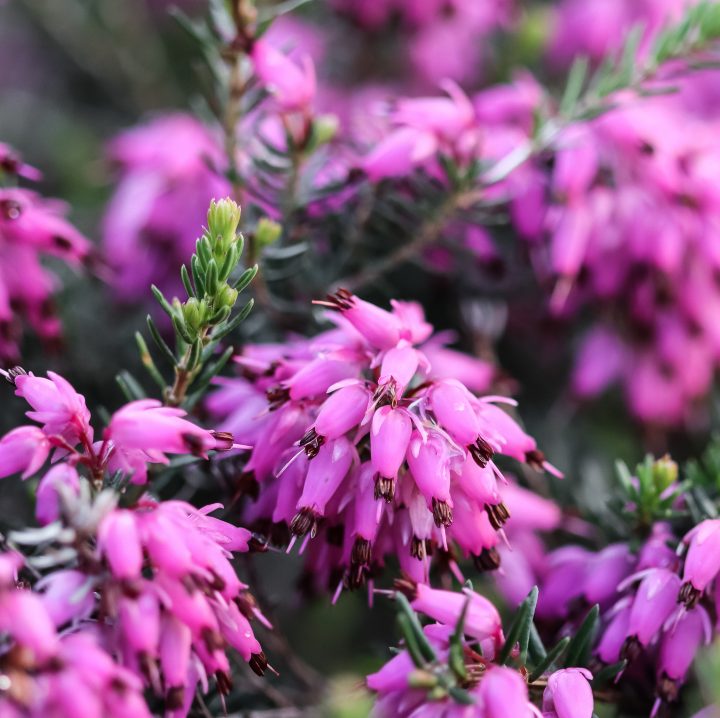
Zones: 5 to 7
Light: Sun
Bloom Time: Winter
Height: 12″ to 18″
Spread: 12″ to 24″
Winter heath (Erica carnea) is a low-growing evergreen shrubby perennial that is covered with small white, pink or purple flowers in the middle of winter when not much else is blooming.
It is an easy-to-grow bush that spreads slowly to create a dense ground cover that deer ignore.
Winter heath should be watered regularly when it is first planted but is quite drought tolerant once established.
Other Plants You Might Like
Or browse all of our posts on evergreen plants.
Have any other suggestions for winter flowering plants? Tell us in the section below.
This post was originally published on January 14, 2021 but was updated with new content on April 12, 2024.

